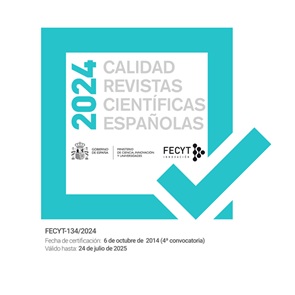THE ORDER OF THOUGHT. WITTGENSTEIN ON ARTIFICIAL INTELLIGENCE AND BRAIN-PROCESSES
Resumen
This paper is not devoted to analyzing Wittgenstein´s claims about machine-thought but to clarifying and expanding an argument of Wittgenstein´s about the non-mechanicity of thought. According to my reading of Zettel 608, such a feature of thought should not be merely accounted to the contrary, it should be argued for by showing that an analysis of our brains does not provide any account of what thought consists in (a conceptual case). The point is quite radical: a neural structure does not define a concept, but a concept defines what neural (or otherwise physical) structures would answer to it. Concepts are therefore not mere "emergent properties" of neural frameworks-unless by "emergent property" we mean a property which does not proceed from its underlying substratum. On these grounds, there is no need for thought to be mechanicall at all, for the order ot thought has not to answer to a physical (or even to micro-logical) order which is mechanical in nature. The inspection of a case of vagueness is intended to ilustrate the point at issue.Descargas
-
Resumen320
-
PDF223
Las obras que se publican en esta revista están sujetas a los siguientes términos:
1. El Servicio de Publicaciones de la Universidad de Murcia (la editorial) conserva los derechos patrimoniales (copyright) de las obras publicadas, y favorece y permite la reutilización de las mismas bajo la licencia de uso indicada en el punto 2.
2. Las obras se publican en la edición electrónica de la revista bajo una licencia Creative Commons Reconocimiento-NoComercial-SinObraDerivada 3.0 España (texto legal). Se pueden copiar, usar, difundir, transmitir y exponer públicamente, siempre que: i) se cite la autoría y la fuente original de su publicación (revista, editorial y URL de la obra); ii) no se usen para fines comerciales; iii) si remezcla, transforma o crea a partir del material, no podrá distribuir el material modificado.
3. Condiciones de auto-archivo. Se permite y se anima a los autores a difundir electrónicamente las versiones pre-print (versión antes de ser evaluada) y/o post-print (versión evaluada y aceptada para su publicación) de sus obras antes de su publicación, ya que favorece su circulación y difusión más temprana y con ello un posible aumento en su citación y alcance entre la comunidad académica. Color RoMEO: verde.










